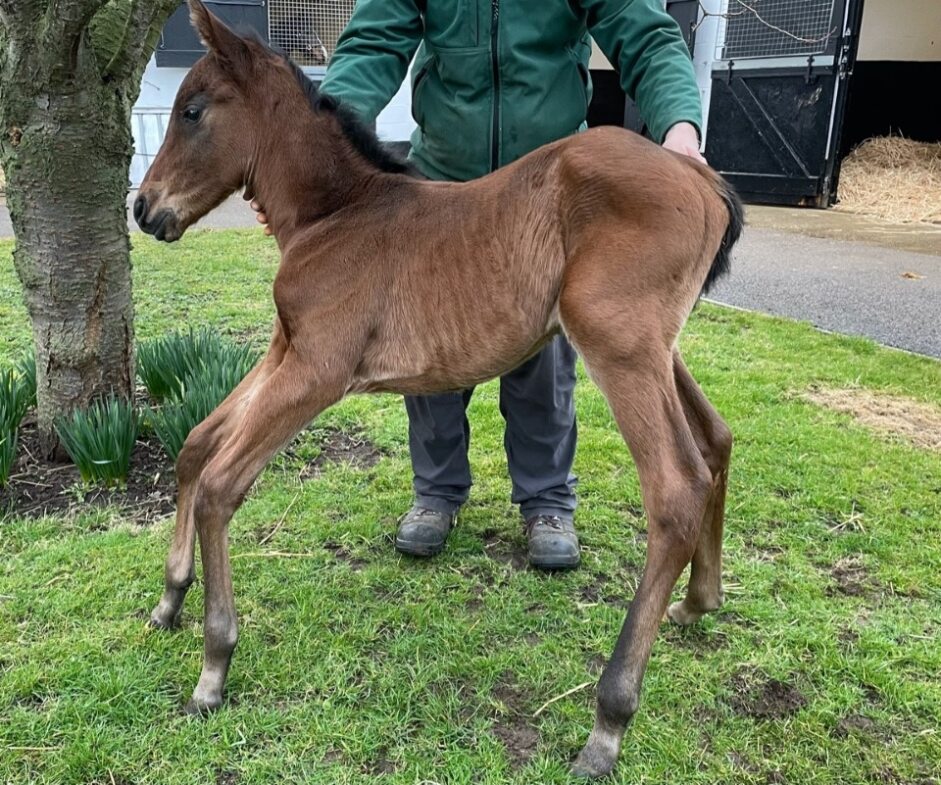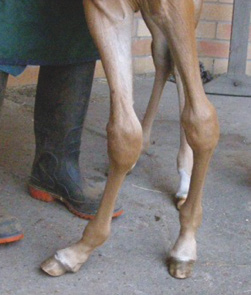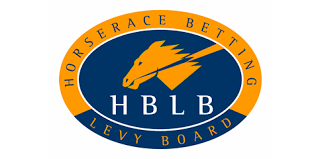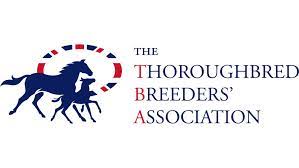
The epidemiology and genetics of congenital musculoskeletal disorders in neonatal Thoroughbreds
The project aims to investigate the contributions of gestational exposures and genetic variants to the risk of congenital developmental orthopaedic disorders (cDOD) in Thoroughbred foals.

Challenge
Conformational abnormalities or DOD present at birth are the most common reason a veterinary surgeon is asked to evaluate a foal in the first 48 hours of life. They represent a significant cost to stud farms and the Thoroughbred breeding industry in general. Flexural and angular limb deformities are examples of common (8-14%) congenital developmental conditions and often require farriery and/or veterinary intervention, including potential surgery. These conditions can have negative impacts on movement patterns, sales price, lameness and injury risk if they are not addressed. These deformities contribute to mare dystocia which ultimately affects broodmare welfare and long-term fertility. Mortality of foals with congenital deformities contribute to the loss of horses from the industry and have a long-term impact on turnover in the Thoroughbred industry. Despite their common occurrence, the aetiology and underlying causes of cDOD are not well understood. Congenital DOD is a complex trait hypothesised to be arising from a combination of genetic, management and environmental factors, including in-utero exposures.

Solution
This study aims to investigate the contribution of gestational exposures and genetic variants to the development of cDOD in Thoroughbred foals. The objectives include: 1) To estimate the incidence of different subtypes of cDOD in Thoroughbred foals; 2) To identify associations between gestational exposures, management practises and hormone levels and cDOD in foals within 3 days of life; 3) To identify risk loci, candidate genes and structural variants that contribute to cDOD; and 4) To characterise the expression of candidate causative genes in musculoskeletal and placental tissues of early embryos/fetuses.
Retrospective breeding history and prospective epidemiological data will be collected from a cohort of broodmares and their offspring over two breeding seasons (2023-2024 & 2024-2025) within the United Kingdom and Ireland. Prospective data will include clinical information, management, nutrition, turnout, and environmental factors. Newborn foals will be assessed for cDOD within 72 hours of parturition. The project will investigate if and how many genetic variants (single nucleotide polymorphisms) may lead to the development of cDOD using blood and/or hair samples. A subset of the cohort samples will be used for genome-wide association studies (GWAS) and genotyping to assess for contributing candidate genes and variants. Statistical modelling will determine genetic and environmental factors that significantly affect the risk of cDOD.
Impact
The project will provide novel insights into the development, incidence and genetic basis of cDOD in Thoroughbred foals. The project outputs will inform evidence-based management modifications for Thoroughbred breeders to reduce the risk of cDOD in foals and improve broodmare fertility and welfare long-term. The results will assist veterinary surgeons with farm-level breeding decisions and foal management strategies. The project's genetic outputs could inform prospective breeding choices for Thoroughbred breeders to reduce the incidence of cDOD both nationally and internationally. Taken together, the project’s outputs can contribute to enhancing horse welfare in the Thoroughbred breeding industry and reduce premature loss of horses bred for racing.
Partners
Orlagh O'Reilly, PhD Student at the Royal Veterinary College (RVC)
Amanda de Mestre, Equine Pregnancy Laboratory, Cornell University
Collaborators: Liam MacGillivray (Newmarket Equine Hospital), Teresa Hollands (University of Surrey)
Funders: Thoroughbred Breeders Association (TBA) and the Horserace Betting Levy Board (HBLB).


